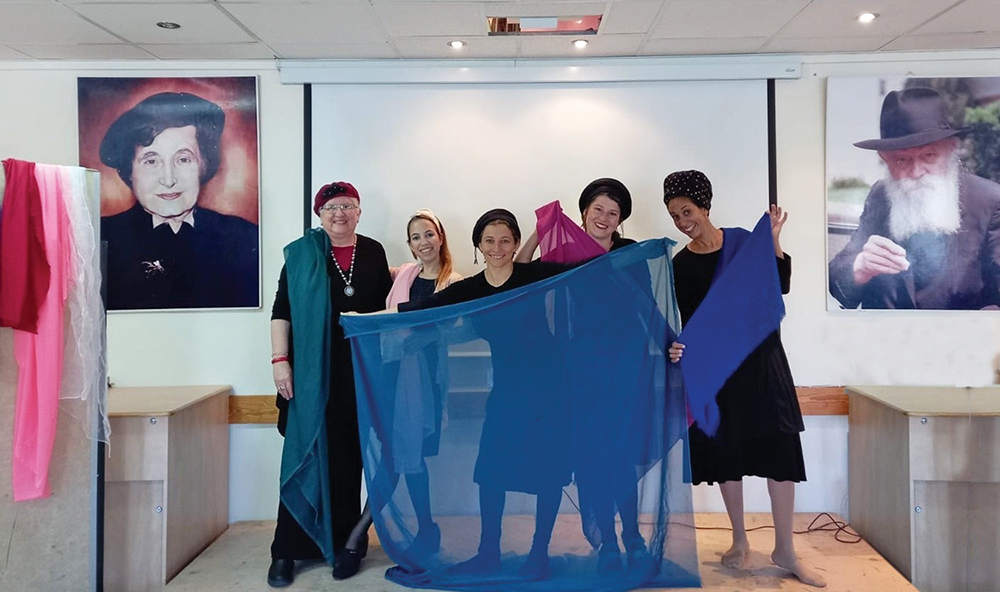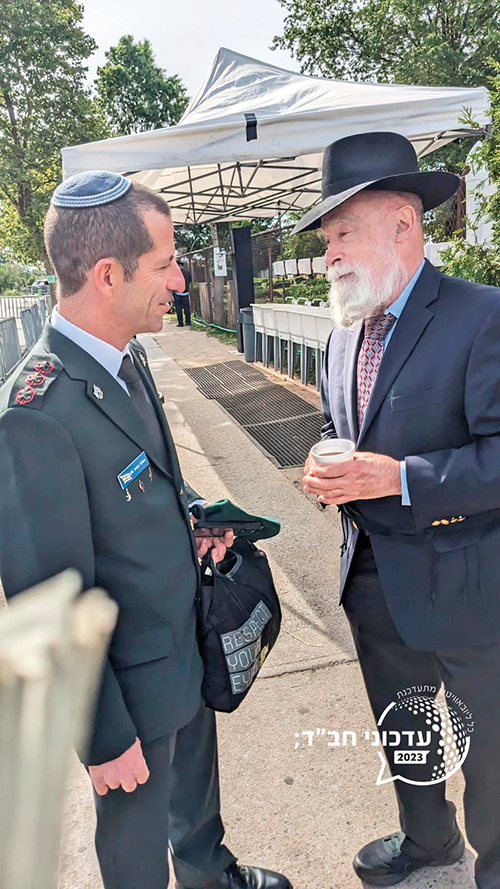
The world recently marked the 30th yahrzeit of the Lubavitcher Rebbe. I have three Rebbe stories of my own.
To begin with, I made aliyah on the third of Tammuz, 1967, one month after the Six-Day War, a date that eventually became the Rebbe’s yahrzeit.
The second story occurred in the year 2009. More than a year earlier our then 3-year-old grandson, son of our daughter Naama and Avner Cohen, was diagnosed with LCH, Langerhans cell histiocytosis. It was challenging to arrive at a diagnosis, as it is a non-genetic, but rare condition, found (at that time) in only a quarter of a million children. I have seen it referred to as one of the “orphan diseases”—meaning something so rare that there is little money for research. I read at the time that the disease sometimes spontaneously resolves itself and is cured, though the patient continues to have regular check-ups, or it develops, God forbid, into cancer. Naama remembers that they were told that if it manifests in three locations, chemotherapy is recommended. (Please do not accept anything written here as authoritative medical advice.)
But first, the backstory.
Naama and Avner had originally lived in Atzmona, in Gush Katif. After the the destruction of Gush Katif in the summer 2005, most of the residents of Atzmona—Naama’s family among them—were relocated by the Israeli government to what used to be Kibbutz Shomria, in the northeast Negev; the 11 families left in the original kibbutz were compensated and relocated. Daily life today in Shomria is similar to a yishuv kehilati, a community village. Its members are deeply religious and Zionistic.

While they were still living in Atzmona, on Pesach of 2005, this child was born in an army car, as Avner, an IDF career officer, was driving Naama to Kaplan Hospital in Rehovot. They didn’t make it in time, and she gave birth in the front seat, with the ambulance driver, who had arrived only seconds before, literally “catching” the baby (a term often used by home-birthers, though this one was unintentional) at the last minute.
Thank God, he was born healthy, and they named him Oz (pronounced with a long “O”) Naftali. Oz, which in Hebrew means “strength,” a quality they felt they would need before the impending destruction of their beloved communities, and Naftali for my father, who had passed away five months earlier and to whom Naama had been close. My father had been a man who combined a great intellect and a love of Jewish learning with a dedication to physical fitness, even into his 80s, and having his name would certainly carry blessing.
A synchronistic, almost mystical, side story was that Avner’s grandfather, who was the sandak, got very emotional when he heard the name at the brit milah. He had had a brother named Naftali who died young, and no one in the family had ever been named for him. So everyone felt that Oz Naftali was a special soul.
In the months following Oz’s diagnosis, in 2008, while Naama held down the fort at home with their three other children, Avner spent many days accompanying Oz to Schneider Children’s Medical Center in Petah Tikvah for a plethora of tests, including blood tests, X-rays and MRIs … not an easy reality for a 3-year-old, and approximately an hour’s drive each way from Shomria.
What followed the diagnosis was a series of blessed “coincidences.” Naama and Avner were, “by chance,” in the midst of organizing the bureaucracy to fly with Oz and his siblings to America to obtain U.S. citizenship for them (“grandparenting” it through me). Their appointments were in Cleveland, my hometown, but we were flying through and spending time with friends in Toronto, where my husband and I had been shlichim in the 80s. As it turned out (coincidentally), the world expert in LCH was located in … Sick Kids Hospital in Toronto, and through Rav Firer of Bnei Brak, they obtained an appointment with her. The doctor checked out Oz, and said that the Israeli doctors were excellent and that they were doing whatever she would be doing.

We flew back to Israel, and the doctors continued to closely monitor Oz’s condition on an ongoing basis.
In 2009, I was in New York for an ATARA (Arts and Torah Association) conference. I had an extra day at the end, and asked a friend to arrange for a ride for me to the Ohel of the Rebbe. I was not a Chabadnik; my interest stemmed from anthropological curiosity.
I took a little Tehillim off the bookshelf, stood by the kever, and let the Tehillim fall open, on its own, to whichever perek it “chose.”
It fell open to Perek 77. Or, in Hebrew, ayin zayin.
Oz.
I stood there davening, with tears in my eyes. Incongruously, the musical line that flowed through my mind was from the ’60s Neil Diamond song “I’m a Believer” … and then I took a close look at the pesukim I was reading in that perek, including, “You are the God who works wonders; You have manifested Your strength among the peoples.”
In the car on the way back, I called my daughter in Israel and said, “Naama, Oz got a bracha from the Rebbe.” She replied, “Ima, we were in Schneider this week and the doctors gave him the all-clear.”
Oz Naftali, who continued to be periodically monitored and is baruch Hashem healthy, recently turned 19 and, like his great-grandfather, is a young man of intellect who loves Torah learning and physical fitness.
My Own Story
In late November 2016, I was diagnosed with breast cancer, while I was in the midst of producing and directing a revival of our Raise Your Spirits Theatre musical “Ruth & Naomi in the Fields of Bethlehem.” I continued in my work, hoping that the adjuvant chemotherapy would not prevent me from completing the task.
A few years earlier a friend of mine originally from Cleveland, Alizah Blake Hochstead, had given me one of the volumes of the Rebbe’s “Igrot Hakodesh” and explained to me the Chabad minhag of opening it to anywhere if there was an issue that bothered you, and reading the “random” question that had been sent to the Rebbe, and his reply.
I opened the book. There was a question from a female teacher, and the Rebbe replied, “Continue to teach the daughters of Israel to sing and to dance.”
A reply read by me, in the midst of directing a … musical. I continued, and found the strength, feeling that a blessing from the Rebbe had my back.
A Prequel
The Kazens were a well-known Chabad family in Cleveland. In the very early ’70s, when my mother, Helen Klein, of blessed memory, became aware of how the Kazens had helped a young man in the neighborhood, she thought she could do something to help even more young people find themselves and draw closer to Judaism.
We were not a Chabad family, but, in addition to her regular work, my mother had always been involved—as a volunteer—in raising money for Jewish schools and causes, and sometimes also for general causes. She had been a board member and a fundraiser of what was at the time Cleveland’s highest-level Talmud Torah, the Yeshivath Adath B’nai Israel, which I attended for six years before switching to a day school (Yavne) for high school.
So her “go to” mode inspired her to join in raising money for a proper Chabad House in Cleveland. She approached several well-known philanthropists, who had contributed to projects she promoted in the past, and succeeded in raising donations of a stunning amount to help get the ball rolling.
The Beat Goes On
I direct a women’s Playback (improvisational) theater troupe in Israel, called “Na’na.” We often receive requests to perform for Chabad women’s events. I always open by telling them my aliyah date, and sometimes share my other Rebbe stories as well. They are always deeply moved.
Hamlet said, “There are more things in heaven and earth, Horatio, than are dreamt of in your philosophy.” I have always taken that to mean that there are “coincidences” and “random” events that we have no explanation for.
My Rebbe stories, which include nods to Neil Diamond and Shakespeare (I don’t think the Rebbe would have minded), and perek ayin zayin (77) in Tehillim, continue to accompany me in these deeply challenging times for Am Yisrael.
The author is an award-winning journalist and theater director and editor-in-chief of WholeFamily.com. She is the recipient of the Lifetime Achievement Award from Atara—the Association for Torah and the Arts.









